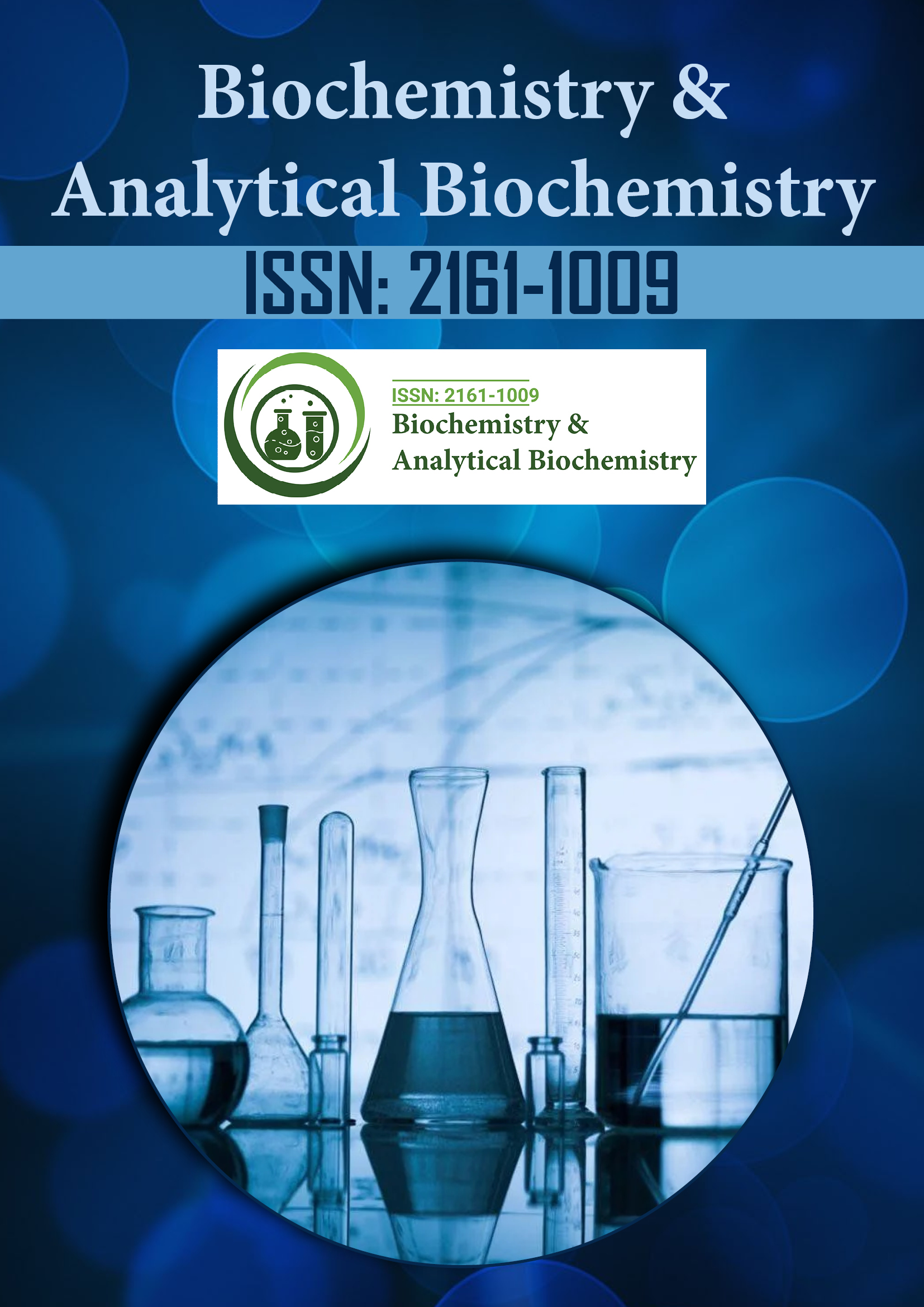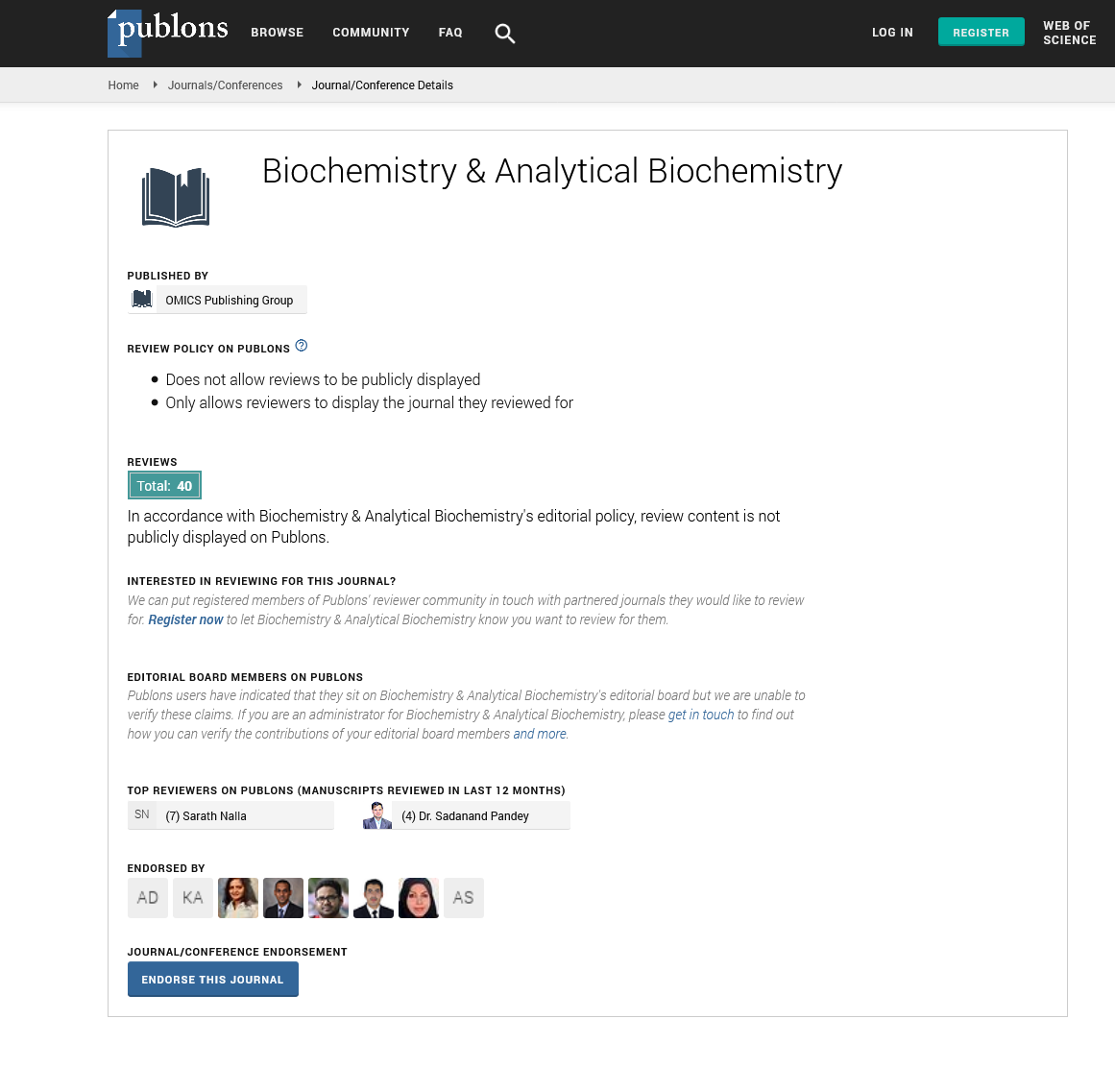Indexed In
- Open J Gate
- Genamics JournalSeek
- ResearchBible
- RefSeek
- Directory of Research Journal Indexing (DRJI)
- Hamdard University
- EBSCO A-Z
- OCLC- WorldCat
- Scholarsteer
- Publons
- MIAR
- Euro Pub
- Google Scholar
Useful Links
Share This Page
Journal Flyer

Open Access Journals
- Agri and Aquaculture
- Biochemistry
- Bioinformatics & Systems Biology
- Business & Management
- Chemistry
- Clinical Sciences
- Engineering
- Food & Nutrition
- General Science
- Genetics & Molecular Biology
- Immunology & Microbiology
- Medical Sciences
- Neuroscience & Psychology
- Nursing & Health Care
- Pharmaceutical Sciences
Commentary - (2025) Volume 14, Issue 1
Intrinsically Disordered Proteins: The Chaos Engine of Cellular Regulation
Amina Qureshi*Received: 03-Mar-2025, Manuscript No. BABCR-25-28836; Editor assigned: 05-Mar-2025, Pre QC No. BABCR-25-28836 (PQ); Reviewed: 19-Mar-2025, QC No. BABCR-25-28836; Revised: 26-Mar-2025, Manuscript No. BABCR-25-28836 (R); Published: 02-Apr-2025, DOI: 10.35248/2161-1009.25.14.569
Description
The classical view of protein function has long been tied to structure — “form defines function.” For decades, this dogma shaped our approach to understanding enzymes, receptors and signaling molecules, leading to spectacular breakthroughs in structural biology. Yet, the last twenty years have seen the quiet rise of a revolutionary class of proteins that defy this norm: Intrinsically Disordered Proteins (IDPs). These dynamic, shapeshifting proteins are not anomalies but integral regulators of complex biochemical networks, particularly in signal transduction, transcription and cellular stress response.
IDPs challenge our very understanding of how proteins work. Unlike well-folded proteins, IDPs or Intrinsically Disordered Regions (IDRs) lack a stable three-dimensional structure under physiological conditions. Instead, they exist as flexible ensembles of rapidly interchanging conformations. This flexibility provides them with a unique evolutionary advantage: adaptability. A single IDP can bind multiple partners, adopt different conformations depending on context and respond swiftly to environmental cues. This versatility is central to their role in orchestrating cellular processes, where the ability to interact with a variety of different molecules allows them to modulate multiple pathways simultaneously.
In particular, IDPs play a crucial role in forming biomolecular condensates — dynamic, membrane-less organelles like stress granules and nucleoli formed via Liquid-Liquid Phase Separation (LLPS). This phase behavior is largely driven by multivalent weak interactions among disordered regions, forming compartments that organize cellular biochemistry without the need for a membrane. These condensates help the cell to compartmentalize reactions in time and space, enabling fine-tuned responses to stress, signaling cascades, or transcriptional demands. The ability to form such structures allows cells to maintain high efficiency and specificity, ensuring the right molecular reactions happen in the right places at the right times.
Yet despite their ubiquity, IDPs remain underappreciated, often ignored in structural studies or dismissed as “noisy” or “unstructured.” This bias stems from a historical reliance on crystallography and NMR, techniques that favor rigid, folded proteins. Fortunately, new methods like single-molecule FRET, cryo-electron tomography and in-cell NMR are beginning to lift the veil on IDP behavior in live environments. These tools reveal a startlingly sophisticated system of regulation that depends on precisely tuned disorder rather than rigid structure.
Importantly, IDPs are central to disease pathology. Many neurodegenerative disorders including ALS, Parkinson’s disease and frontotemporal dementia involve the misregulation or aggregation of IDPs like TDP-43, tau, and α-synuclein. These misfolded, aggregated forms of IDPs are thought to trigger toxic cellular responses, contributing to the progression of these diseases. In cancer, transcription factors such as p53 and c-Myc, both rich in disordered regions, are frequently mutated or dysregulated. Rather than being peripheral players, these disordered proteins are often master regulators of cell fate, controlling processes like proliferation, apoptosis and differentiation. Their disordered nature allows them to flexibly respond to cellular signals and maintain the adaptability necessary for tumorigenesis.
This commentary calls for a paradigm shift: to recognize disorder not as a defect but as a feature. Biological chaos, in the form of flexibility and adaptability, may be nature’s strategy to navigate complex, fluctuating environments. Instead of seeking static representations of these proteins, researchers should embrace the stochasticity and explore how conformational heterogeneity encodes information and regulates interactions. This perspective will allow us to move beyond the traditional view of proteins as static machines and embrace a more dynamic, context-dependent understanding of their function.
Furthermore, drug discovery must evolve to target IDPs. Conventional approaches rely on well-defined binding pockets, which IDPs typically lack. However, promising approaches like allosteric modulation, covalent modifiers and structure-independent binders (molecular glues) are beginning to show efficacy. These strategies focus on modulating the overall conformational state of IDPs, offering the potential for therapeutics that can restore or enhance their function rather than simply inhibiting it. The next generation of therapeutics could very well be those that tame or exploit protein disorder rather than eliminate it.
In closing, intrinsically disordered proteins are not just biochemical oddities but critical engines of regulation. Embracing their role in biology could unlock new therapeutic frontiers and deepen our understanding of life at the molecular level. The time has come to rewrite the structural dogma and welcome disorder as an essential feature of the cellular toolkit.
Citation: Qureshi A (2025). Intrinsically Disordered Proteins: The Chaos Engine of Cellular Regulation. Biochem Anal Biochem. 14:569.
Copyright: © 2025 Qureshi A. This is an open access article distributed under the terms of the Creative Commons Attribution License, which permits unrestricted use, distribution, and reproduction in any medium, provided the original author and source are credited.

